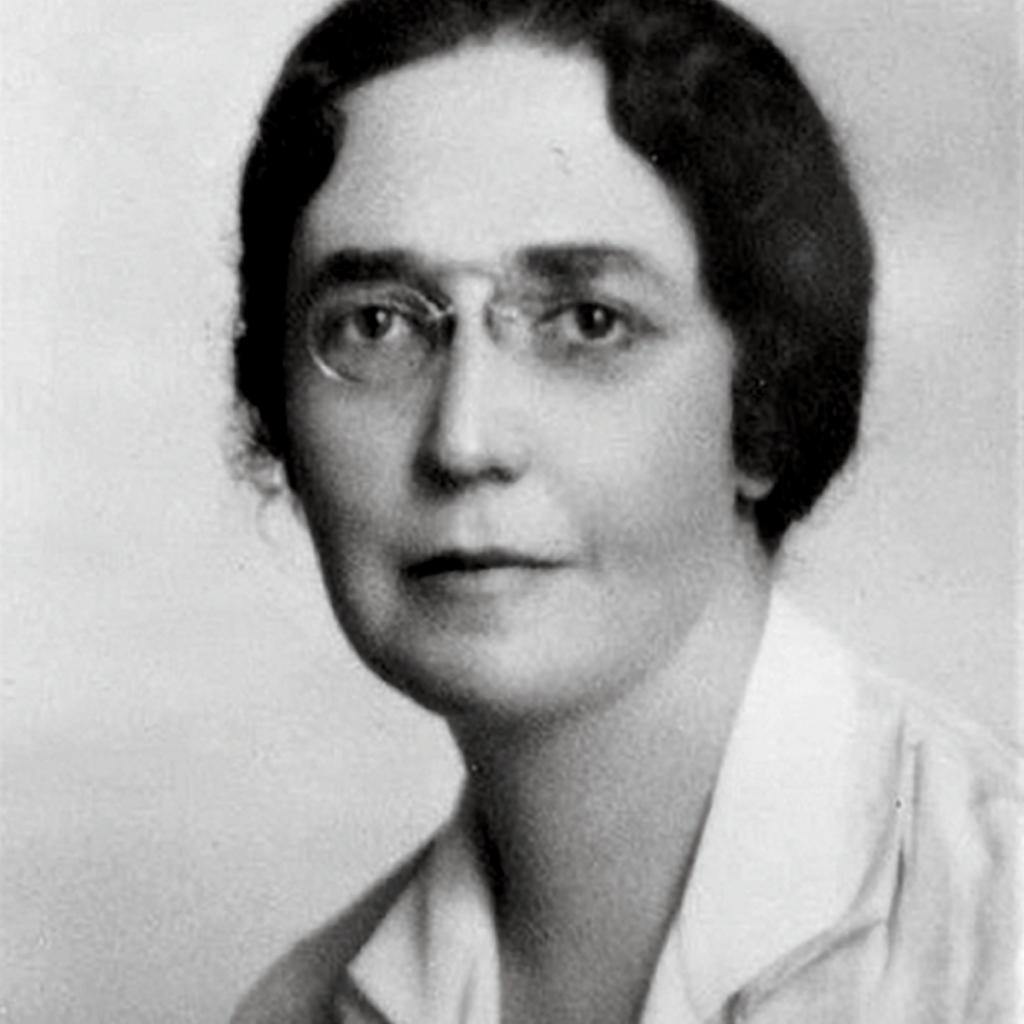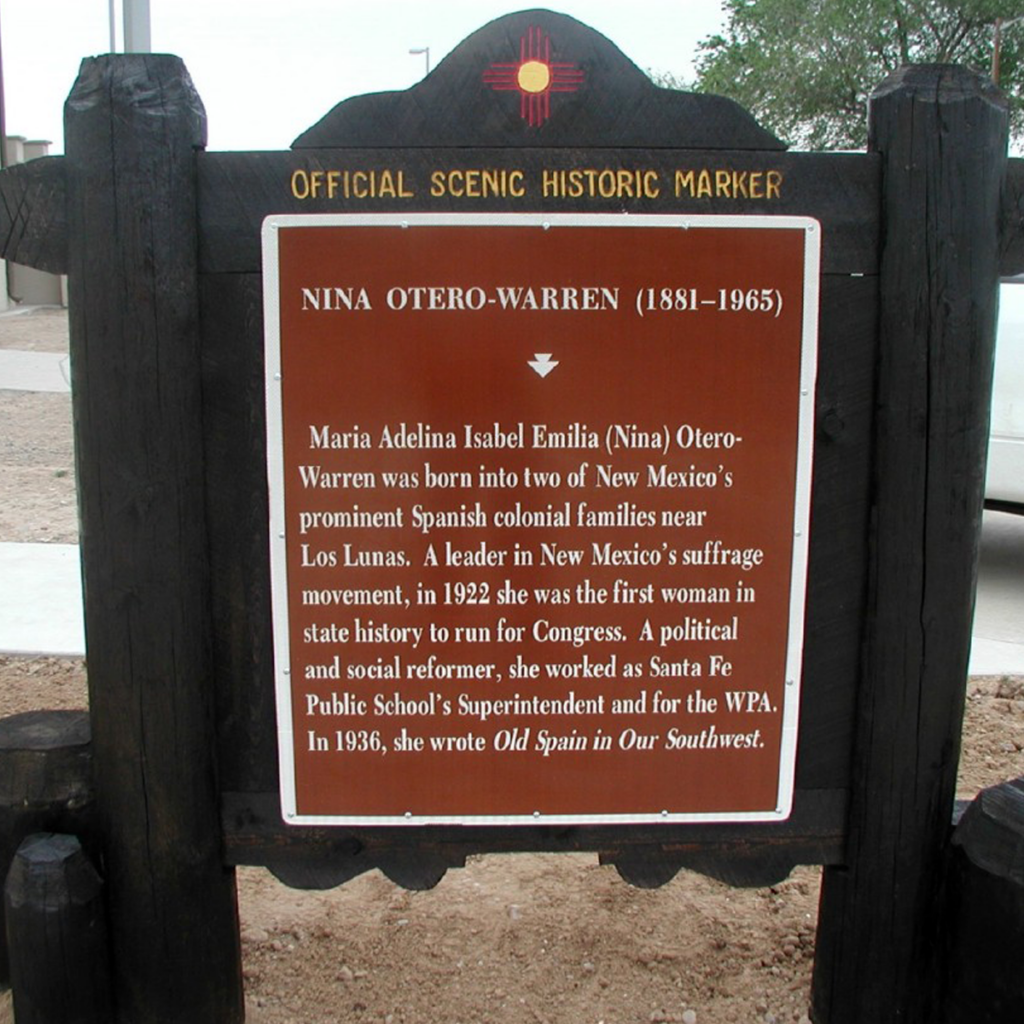Nina Otero-Warren.
Photo Credit: Courtesy of New Mexico Historic Women Marker Program.
Nina Otero-Warren
1881 - 1965
Valencia County
A leader in New Mexico’s suffrage movement, she was active in politics and served as one of the first female Superintendents of Public Schools for Santa Fe. In 2021, the United States Mint selected her to be one of the first women in the American Women quarters series.
Adelina “Nina” Otero-Warren was a leader in New Mexico’s suffrage movement and one of the state’s first female government officials. She also became one of the first female Superintendents of Public Schools in Santa Fe County and served as Inspector of Indian Schools in Santa Fe County. Otero-Warren also served as Chairman of the State Board of Health of New Mexico, member of the executive board of the American Red Cross, and Director of the literacy program of adult education for the State under the Works Projects Administration.
The daughter of Manuel B. Otero and Eloisa Luna, members of two of New Mexico’s most influential Hispano families, María Adelina Isabel Emilia Otero was born in Los Lunas in 1881. She never knew her father, who died when she was twenty months old. After her father’s death, her mother hired a governess, Mary Elizabeth Doyle or “Teta,” a woman who remained in Otero-Warren’s life for more than sixty years. Her mother remarried Alfred M. Bergere. Otero-Warren acted as matriarch to her eleven siblings, especially after the death of their mother in 1914.
The Bergere family moved to Santa Fe in 1897 after Manuel B. Otero’s cousin, Miguel Antonio Otero II, became governor of New Mexico Territory. The Bergere family hosted numerous social functions for affluent Santa Feans. At such events, Otero-Warren mingled with upper class and politically active New Mexicans. In 1907, Otero-Warren met Rawson D. Warren, the commanding officer of the Fifth U.S. Cavalry. The two married a year later and established a home in Fort Wingate, near Gallup, and later moved to Utah. The couple divorced, but Otero-Warren kept the Warren name.
Otero-Warren became active in the suffrage movement. She appealed particularly to Spanish-speaking women because of her ability to convey her message in Spanish. She soon caught the attention of national suffragist leader, Alice Paul, who co-founded the Congressional Union (CU). The organization looked to Otero-Warren to head the New Mexico chapter of the CU in 1917. By 1920, Otero-Warren’s efforts paid off, and women in New Mexico finally won the right to vote.
In 1918, Otero-Warren became Superintendent of Public Schools in Santa Fe County and held this position until 1929. In 1921, Otero-Warren ran for the U.S. House of Representatives, but lost to her Democratic opponent. Otero-Warren sought to improve conditions in schools in rural Hispano communities and among Native American populations. In 1923, she was appointed Inspector of Indian Schools in Santa Fe County. In this position, she stirred up some controversy for criticizing the federal Indian school system after observing Indian children residing and being schooled in deplorable conditions. She stayed in this position for only a few years, but remained a supporter of Native American rights. Otero-Warren also served as Chairman of the State Board of Health of New Mexico, member of the executive board of the American Red Cross, and Director of the literacy program of adult education for the State under the Works Projects Administration.
In the early 1930s, Otero-Warren and her close friend, Mamie Meadors, homesteaded 1,257 acres of land fifteen miles outside of Santa Fe, which they called the Las Dos Ranch. In 1936, Otero-Warren’s book, Old Spain in Our Southwest, was published. In it, she details stories of her childhood in Los Lunas, as well as Hispano customs, folktales, and history. In 1947, she and Meadors opened Los Dos Realty and Insurance Company. Meadors died in 1951 but Otero-Warren continued with the business until her death in 1965.
In 2021, the United States Mint announced that Otero-Warren would be among the first women depicted on the reverse of the quarter as a part of the American Women quarters series.
Sources:
Jensen, Joan M., and Darlis A. Miller, eds. New Mexico Women: Intercultural Perspectives. Albuquerque: University of New Mexico Press, 1986.
Massman, Ann M. “Adelina “Nina” Otero-Warren: A Spanish Cultural Broker.” Journal of the Southwest 42 , Winter 2000, pp. 877–896.
Robolledo, Tey Diana, eds. Nuestras Mujeras: Hispanas of New Mexico: Their Images and Their Lives, 1582–1992. Albuquerque: El Norte Publications/Academia, 1992.
Whaley, Charlotte. Nina Otero–Warren of Santa Fe. Albuquerque: University of New Mexico Press, 1994.
"American Women Quarters™ Program." United States Mint. 2021-08-02.
Directions:
Nina Otero-Warren
Valencia County
Activist | Community leader | Educator | Public servant |
Statehood (1912 - present) | Territorial Period (1848 - 1912) |
Central








